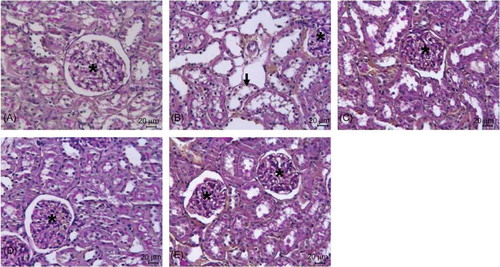Figures & data
Figure 1. Creatinine levels. Results are expressed as a mean ± SEM.Note: *C versus IR and C versus VD3 p = 0.004; #IR versus VD3, p = 0.009; IR versus M and IR versus M + VD3, p = 0.004. C: control, I/R: ischemia–reperfusion, VD3: 1,25-dihydroxyvitamin D3, M: melatonin, M + VD3: melatonin + 1,25-dihydroxyvitamin D3.
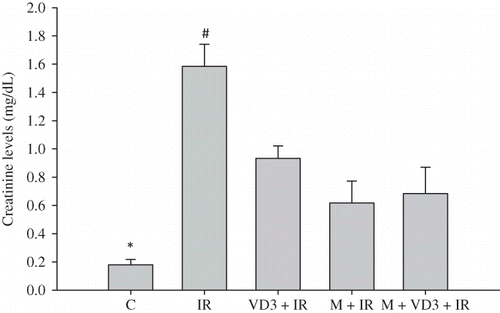
Figure 2. Blood urea nitrogen (BUN) levels.Note: *C versus IR and C versus VD3, p = 0.004; #IR versus VD3, IR versus M and IR versus M + VD3, p = 0.002. For abbreviations, see legend to Figure 1.

Figure 3. Renal tissue glutathione (GSH) levels.Note: *C versus IR and p = 0.015; #IR versus VD3 and IR versus M, p = 0.009. For abbreviations, see legend to Figure 1.
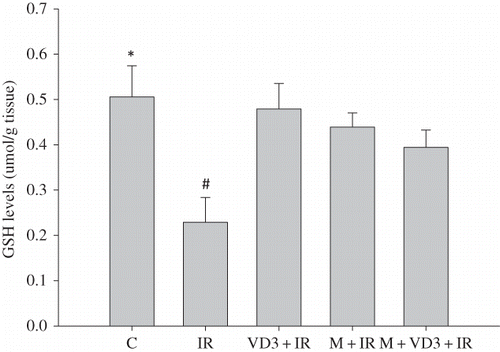
Figure 4. Renal tissue superoxide dismutase (SOD) activities.Note: *C versus IR, p = 0.016; #IR versus VD3 and IR versus M, p = 0.004; IR versus M + VD3, p = 0.03. For abbreviations, see legend to Figure 1.
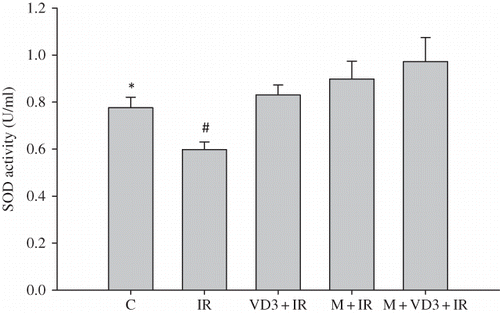
Figure 5. Renal tissue malondialdehyde (MDA) levels.Note: *C versus VD3, p = 0.002; C versus M and C versus M + VD3, p = 0.004; #IR versus VD3, p = 0.009; IR versus M and IR versus M +VD3, p = 0.015. For abbreviations, see legend to Figure 1.
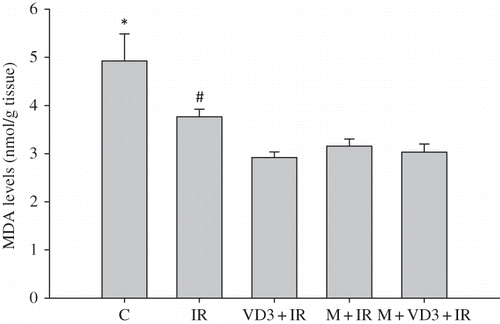
Figure 6. Renal tissue nitrite + nitrate (NOx) levels.Note: *C versus IR, p = 0.015; #IR versus VD3, IR versus M and IR versus M + VD3, p = 0.002. For abbreviations, see legend to Figure 1.
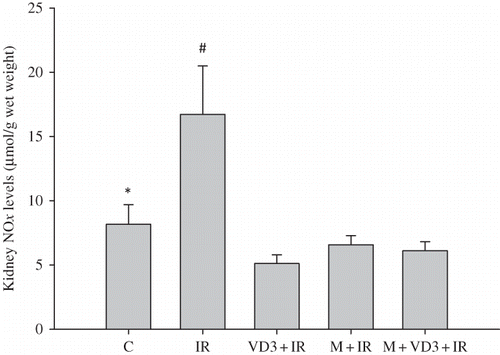
Figure 7. PAS staining of kidney sections of control (A), I/R (B), Mel + I/R (C), VD3+ I/R (D), and Mel + VD3+ I/R (E) groups. In the I/R group, extensive necrosis plus dilation, flattening of epithelium, and loss of brush border in proximal tubuli (arrow) were seen (Glomeruli; asterisk) (bar = 20 μm).
